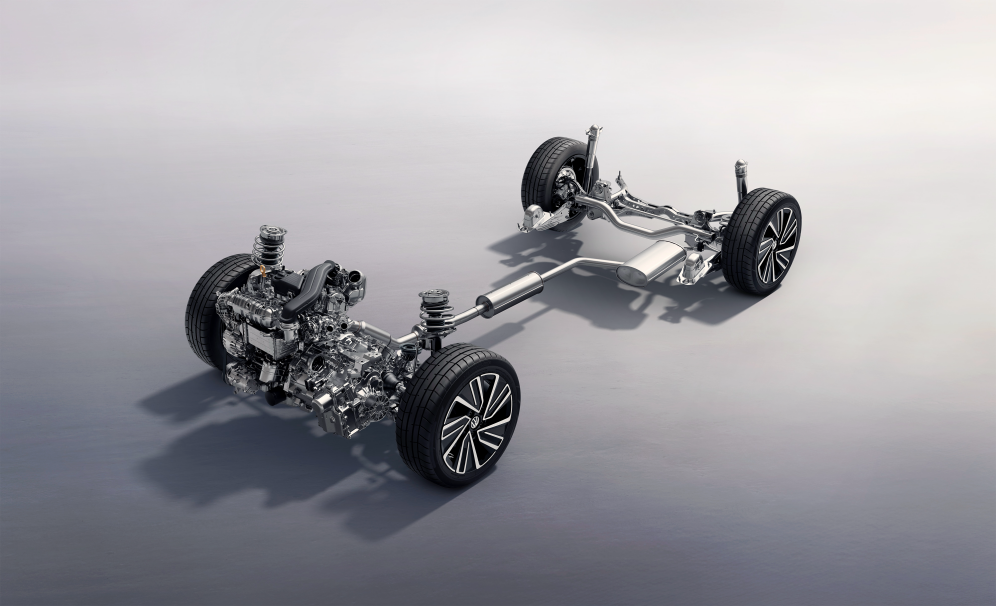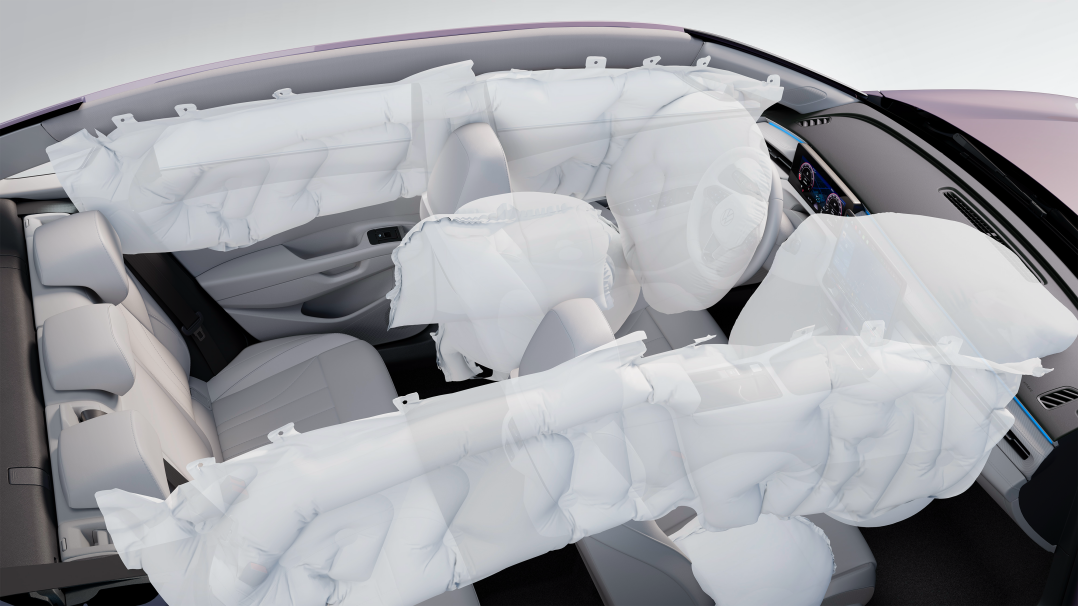What Makes Lavida Pro Stand Out Among 'National Family Cars'?
![]() 11/26 2025
11/26 2025
![]() 451
451
Introduction | Lead
As the phrase "national family car" circulates widely in the market like hawks on the hunt, one can't help but wonder: Is this label a natural outcome of market recognition, or is it a clever marketing tactic? In the fiercely competitive compact sedan market, where price wars are commonplace, the arrival of the Lavida Pro, which bears the "national family car" title, offers a compelling case study that warrants deep reflection. What sets it apart from the rest?
Produced by | Heyan Yueche Studio
Written by | Yun Li
Edited by | He Zi
Full text: 2,448 characters
Reading time: 4 minutes
The classic philosophical debate of "which came first, the chicken or the egg" finds a new interpretation in the automotive industry: Does a benchmark product emerge first, followed by its title, or does the hype surrounding the title precede the product? Behind the intense competition for the "national family car" crown lies a fierce battle for market dominance and consumer attention.

△ What Makes Lavida Pro Stand Out Among 'National Family Cars'?
While numerous cars claim the "national family car" title, there is a wide variation in product endorsements, market performance, and sales volumes. Lavida, which earned this prestigious title as early as 2008, has now introduced its Pro version. What makes it stand out in the crowd? Some argue that this reflects not just the competitiveness of an individual product but also the value orientation of the entire industry.
Learning to Humble Itself
Recently, Lavida Pro made its official debut with a limited-time price range of 88,800-112,900 yuan. This pricing strategy is precisely targeted at the price gap between traditional A-class and emerging A+-class vehicles. Objectively speaking, this approach is not merely a tactic in the price war but a carefully crafted "value misalignment" strategy—offering an A+-class experience at an A-class price point.
From a market perspective, Lavida Pro's pricing aligns with the current structural shifts in the automotive industry. Amid the pressure from declining new energy vehicle prices and the shrinking market shares of joint-venture brands, SAIC Volkswagen has chosen a path that appears conservative yet is actually aggressive. While maintaining its brand premium, it achieves price advantages through configuration upgrades. Terminal data reveals that Lavida ranked among the top three in cumulative sales in its class over the first ten months of the year, indicating strong market support for its pricing strategy.

△ Lavida Pro Officially Launched at 88,800-112,900 Yuan
More notably, Lavida Pro's added incentives, such as a 4,000-yuan trade-in subsidy and two-year zero-interest financing, further lower the entry threshold for potential buyers. While marketed as a response to the "intense selling environment," this combination of "low price, high specs" directly targets the weaknesses of its competitors.
Evidently, SAIC Volkswagen, as an established automaker, remains relatively composed in the face of fierce competition. It relies on its strengths and proven strategies without resorting to desperate measures. As factory personnel put it, Volkswagen does not seek internal competition; Lavida Pro simply continues the legacy traits and selling points of previous Lavida models.
Is Lavida Pro Still a 'German Original'?
Historically, Lavida has been a top performer in terms of sales volume for SAIC Volkswagen. Strictly speaking, Lavida was tailored to meet the preferences of Chinese consumers, yet the nickname "German Original Lavida" persists. While partly humorous, this term acknowledges Lavida's strong German heritage and engineering standards.

△ Lavida Pro Resembles a Compact Passat
Lavida Pro adopts the Pro family design language, which is shared with the Passat. Its body length has been upgraded to 4,720mm, meeting the traditional standards of an A+-class vehicle, while being priced as an A-class car, presenting a "half-tier higher" product stance. The dual front grille options—a horizontal chrome arrow-array grille and a Starry Sky Edition (Starry Black) grille—emulate the design strategy of the B-class flagship Passat, catering to both traditional family users and young consumers' desire for individuality.
The interior design embraces a Nordic home style, featuring integrated air vents and a stalk-style gear shifter paired with wraparound seats, reflecting human-centric details. This shift in design philosophy marks SAIC Volkswagen's transition from "German craftsmanship" to "German craftsmanship + Eastern aesthetics," blending the best of both worlds.
Lavida Pro's powertrain features the EA211 1.5T EVOⅡ engine, delivering 118kW of maximum power and 250N·m of peak torque, remaining competitive in its class. Notably, its WLTC fuel consumption of 5.54L/100km, compatible with 92 octane gasoline, precisely meets the economic demands of family users.

△ Lavida Pro Continues to Emphasize 'Premium Feel'
Additionally, Lavida Pro's first-ever four-wheel independent suspension system, claimed to be fine-tuned through nearly a hundred schemes by the German engineering team, significantly improves ride comfort and stability compared to previous models. As onsite technicians noted, Volkswagen's meticulous chassis tuning is why its vehicles consistently deliver a "premium driving experience."
Since the launch of products like Tiguan Pro, SAIC Volkswagen has promoted the "same intelligence for ICE and EV" philosophy, a trend that is key to its sustained growth. This logic is well-reflected in Lavida Pro.
Built on the MQB-EVO intelligent architecture and powered by a Qualcomm 8155 automotive-grade chip, the system ensures smooth operation and rapid responsiveness. Lavida Pro deeply integrates the Tencent ecosystem, featuring Tencent Maps, WeChat for Cars, and Tencent Companion 2.0, transforming from a mere tool to a trusted companion for drivers.
From its traditional tuning and feature configurations, Lavida Pro maintains German product consistency while incorporating localized Chinese intelligence. In other words, it remains one of the most comprehensive offerings in its class and price range. Clearly, Lavida Pro reflects SAIC Volkswagen's deep insights into China's passenger vehicle market, demonstrating a profounder understanding of Chinese consumers than any previous Lavida generation.

△ Lavida Pro's Safety Has Significantly Improved
Redefining the 'National Family Car' Value
Conceptually, the "national family car" is both a market-driven outcome and a brand positioning statement. With 17 years of history and 6.5 million users, the Lavida family provides ample justification for this title. However, in today's market, its connotation is evolving.
In the 100,000-150,000 yuan price range, consumer decisions now hinge on comprehensive value assessments rather than mere brand loyalty. Narratives like "domestic rise" and "brand confidence" dominate younger consumers' perceptions, casting doubt on whether "German genes" remain as appealing as they were five or ten years ago. As a core selling point, brand competitiveness for Lavida Pro has inevitably declined relatively.
Lavida Pro must prove whether the fusion of German genes and Chinese elements can create beyond-expectation value and deliver cost-performance parity with domestic products, even without relying solely on its brand and German labels.
Looking back, the "national family car" was a product of its time, embodying the era's "contentment" and "living in the present" ethos. Today, while many products claim this title, Lavida Pro stands out for its longer, richer legacy, offering guiding value for current "family benchmark" models.
Commentary
Lavida Pro's launch represents a significant transformation attempt by joint-venture automakers in the new era. Its true significance lies not just in product enhancement but in providing an industry revelation: In fierce competition, "benchmarks" can take many forms. Some are not marketing gimmicks but natural results of time and market validation. Sometimes, returning to users' fundamental needs may be the eternal competitive law for automotive products.
(This article is original to Heyan Yueche and may not be reproduced without authorization.)








